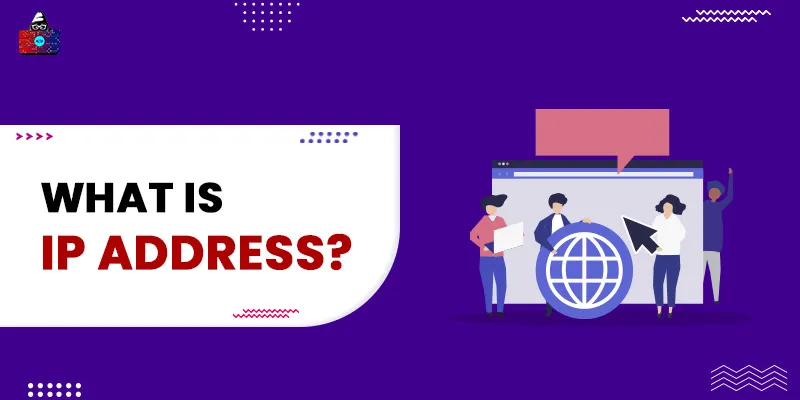In this era of the Internet, you all must be aware of what is the internet and what are its various applications. Whether you take a smartphone or any smart gadget they all come with internet connectivity which helps them to link with the huge web spread across the world.
The Internet has many pros but we should not ignore the threats it brings to us. Now the Internet has become an integral part of our daily life, if you are an internet addict or cherish web surfing all the time, you simply cannot imagine a single day without the internet.
When we use the internet or simply surf the web we come across a term so often, which is IP. For example, the web browser notifies us that IP is not found and that IP address does not authorize when we try to access pages which are dead or the government or Internet Service Provider(ISP) has banned that particular website in our reign.
So, what is this IP, here in this article we have unfolded all the pages and tried to make you understand what is IP and how it is related to IP address. Here we have also defined all the IP-related terms such as IP address IP4 & IP6 versions, and TCP/IP.
What is IP?
It stands for Internet protocol, and as its name suggests it is a protocol of the Internet, the more technical definition states IP is the principal communication protocol in the Internet Protocol Suite. When we try to send data from one system to another using the internet, the data get divided into small entities which are known as datagrams or data packets, and it uses the internet as a medium to deliver these data packets from the source system to the destination system or domain.
To transport data from one system to another IP use some information such as the IP address of the sender, the IP address of the receiver, and IP versions, and all these details reside in data packets or datagrams. It divides the sender data into well-structured packets, so each packet encapsulates the additional information such as sender IP address, Receiver IP address, and IP version along with data.
Functions
- It addresses the host interface.
- It encapsulates the data into datagrams or packets.
- It fragments the data at the source site
- It resembles the data at the destination site
- It sets a route between the source and the destination.
What is the IP address?
The main function of IP is to break the data into small packets and route it between source and destination, so here's the main question there are so many systems connected to the internet. How the IP will decide which is the correct system to deliver the data, here the IP address comes in play. It stands for Internet Protocol Address and it is an alphanumerical label assigned to each device and domain which makes that system unique, to identify, the only purpose of IP address is to identify the different systems.
Every device which is connected to the internet and every domain on the server has a unique IP address which helps IP to determine which system is the destination system.
Functions
There are two major functions of IP address
- It helps to identify the source and destination systems
- It also identifies the host and destination domains over networks.
Version
Since the concept of the Internet has introduced, there are two major versions of IPs that have come into existence, which are
- IPv4
- IPv6
What is IPv4?
It was the first IP version introduced with the Internet and deployed for the production of the ARPANET in 1983. Yet many devices work on this IP version because it is less expensive and easy to maintain.
What is IPv6?
It was developed by the Internet Engineering Task Force (IETF) in 1994, and on 14th July 2017, it was ratified as a Draft Standard for the IETF. IPv6 is more efficient than IPv4 and can create 100 times more IP addresses as compared to IP4.
How is IP Address Different from IP?
In general, when we talk about the internet, we interchangeably use the term IP and IP address, but both are two different concepts. It represents Internet protocol the main objective is to set communication and route between two systems so the datagrams or packets can be transferred from the source system to the destination system, whereas IP address is an address used by IP to locate the destination. Its functionality is the same for each system, and each has its unique IP address.
What is TCP/IP?
TCP stands for Transport Control Protocol. This protocol works along IP and is dedicated to sending data packets in sequence. In IP, when the data packets are transmitted from the source system, it is not necessary that packets are sent in a sequential manner and when the data is received by the receiver, the packets are received in unorder sequence but IP reassembles all these packets in proper order and gives a proper sequence data to the receiver.
But TCP is dedicated to transmitting data packets in sequential order before the TCP sets communication between sender and receiver it makes acknowledgments to send packets between two systems once the acknowledgment is done then it transmits data in sequential order.
Conclusion
It is a different concept so do not interchange it with an IP address, It is a protocol that sets some rules to transmit data between two systems whereas an IP address is a piece of information that is used by the IP so the data get delivered to the appropriate destination. IPv4 and IPv6 both are in use but slowly organization moving to IPv6 because it provides more security and flexibility than IPv4.
TCP and IP were designed to be used together but we can use other transport protocols such as UDP with IP. If you like this article and have any suggestions related to IP, you can shear your feedback and suggestion by filling in the comment box.
People are also reading:



![What is TCP/IP Model? [Definition, Working, & Layers]](/media/new_post_images/TCP_IP_Model.webp)
